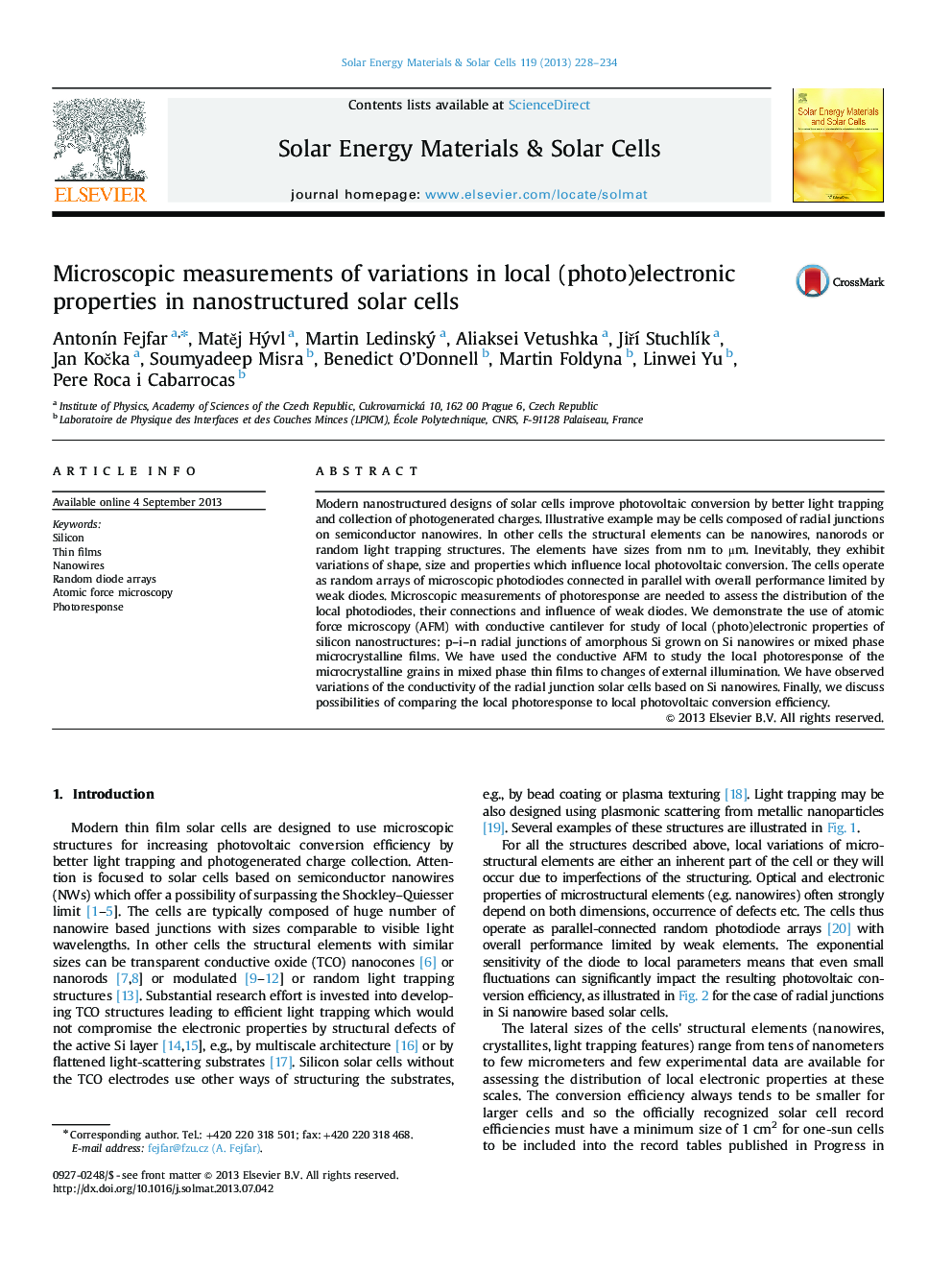| Article ID | Journal | Published Year | Pages | File Type |
|---|---|---|---|---|
| 6536004 | Solar Energy Materials and Solar Cells | 2013 | 7 Pages |
Abstract
Modern nanostructured designs of solar cells improve photovoltaic conversion by better light trapping and collection of photogenerated charges. Illustrative example may be cells composed of radial junctions on semiconductor nanowires. In other cells the structural elements can be nanowires, nanorods or random light trapping structures. The elements have sizes from nm to μm. Inevitably, they exhibit variations of shape, size and properties which influence local photovoltaic conversion. The cells operate as random arrays of microscopic photodiodes connected in parallel with overall performance limited by weak diodes. Microscopic measurements of photoresponse are needed to assess the distribution of the local photodiodes, their connections and influence of weak diodes. We demonstrate the use of atomic force microscopy (AFM) with conductive cantilever for study of local (photo)electronic properties of silicon nanostructures: p-i-n radial junctions of amorphous Si grown on Si nanowires or mixed phase microcrystalline films. We have used the conductive AFM to study the local photoresponse of the microcrystalline grains in mixed phase thin films to changes of external illumination. We have observed variations of the conductivity of the radial junction solar cells based on Si nanowires. Finally, we discuss possibilities of comparing the local photoresponse to local photovoltaic conversion efficiency.
Related Topics
Physical Sciences and Engineering
Chemical Engineering
Catalysis
Authors
AntonÃn Fejfar, MatÄj Hývl, Martin Ledinský, Aliaksei Vetushka, JiÅà StuchlÃk, Jan KoÄka, Soumyadeep Misra, Benedict O'Donnell, Martin Foldyna, Linwei Yu, Pere Roca i Cabarrocas,
